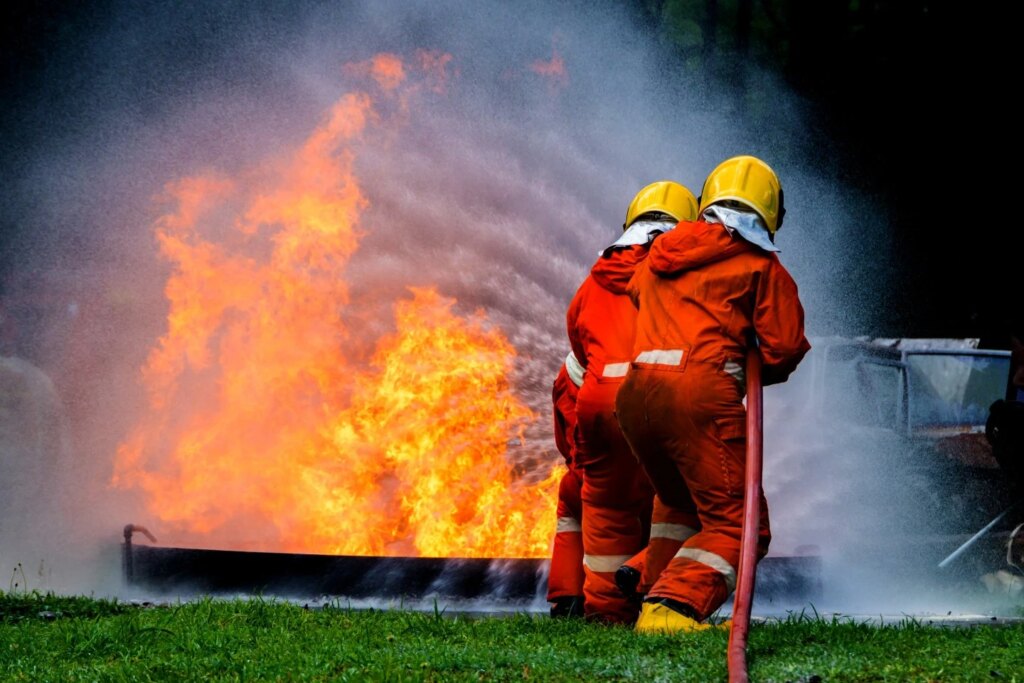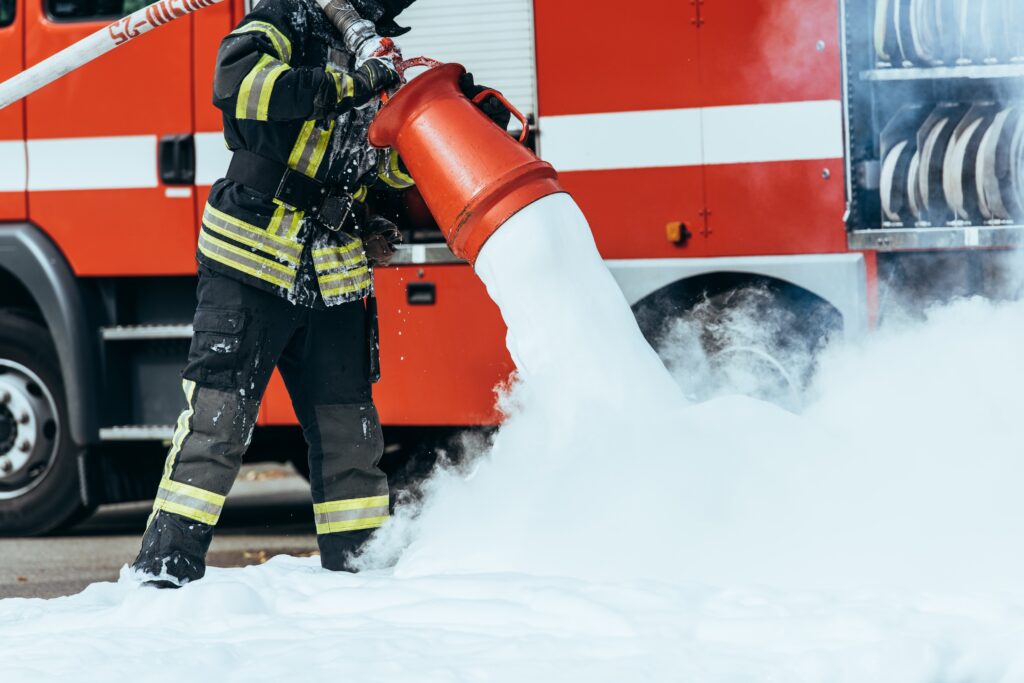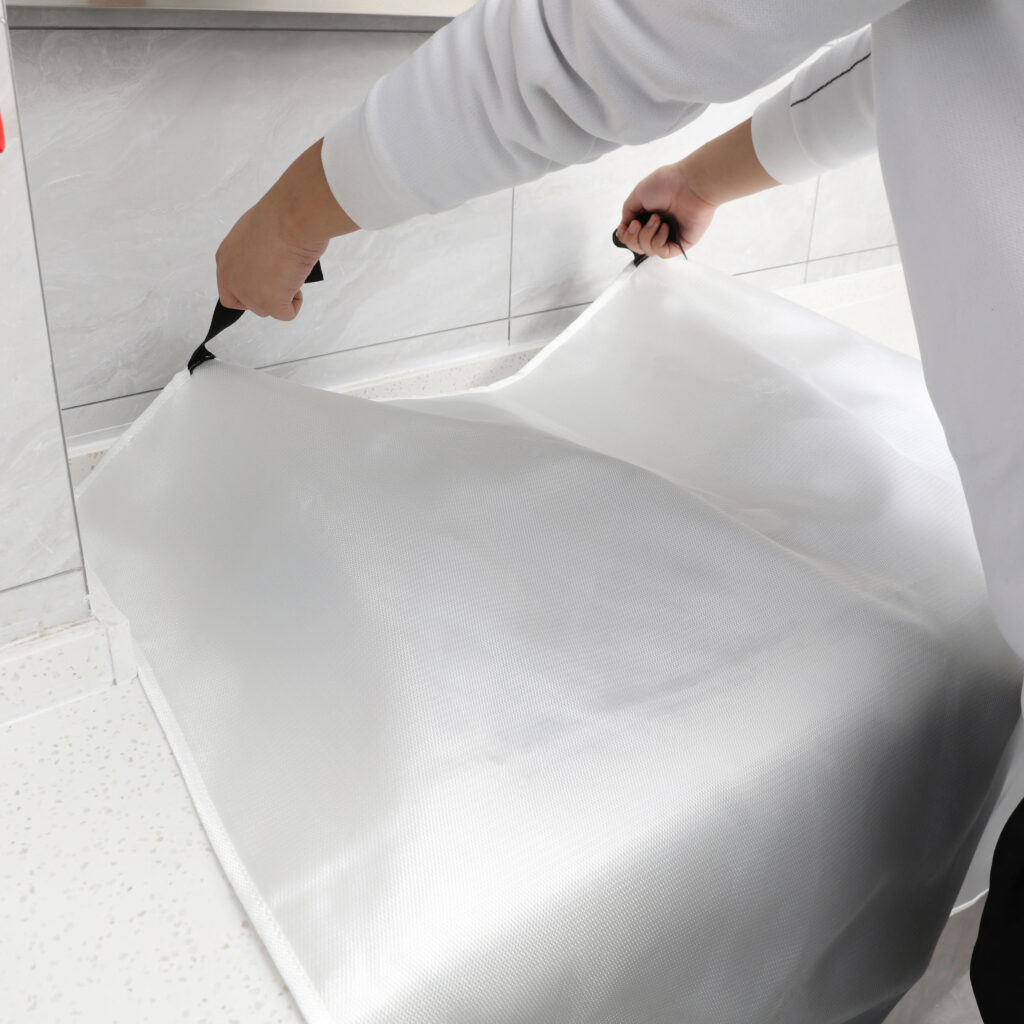Fire safety is an essential aspect of home management that requires comprehensive knowledge and preparedness. Understanding the various types of fires and their extinguishing methods can be a lifesaving skill.
In this extensive guide, we’ll walk you through the five different classes of fires and the appropriate means to put them out effectively.
Whether you’re a homeowner, a fire safety enthusiast, or someone looking to enhance your emergency preparedness, this post will equip you with vital information for tackling different classes of fire and emergencies.
Understanding Different Types of Fire
Fires are classified into five categories based on their fuel source. These fire classifications were established by the National Fire Protection Association (NFPA) to help identify the appropriate extinguishing methods. The five classes of fires include:
- Class A – Fires Involving Ordinary Combustibles
- Class B – Flammable Liquid Fires and Gas Fires
- Class C – Fires in Electrical Equipment
- Class D – Flammable Metals Fires
- Class K – Cooking Oil Fires
Let’s take a closer look at these fire classes and the most effective ways to put them out.
What are Class A Fires?
Class A fires are the most common type of fire that occurs in residential and commercial environments. These fires involve ordinary combustibles such as wood, paper, cloth, rubber, and certain plastics.
Class A fires can quickly spread if they come into contact with more combustible materials, making them particularly dangerous if not controlled promptly.

How Do You Extinguish Class A Fires?
Using the right extinguishing agent to extinguish Class A fires effectively is crucial.
The most common and effective method is to use water or water-based agents. Waterworks exceptionally well on Class A fire because it cools the burning material below its ignition temperature, effectively stopping the fire.
Here are the steps for putting out Class A fires:
Using a Water Extinguisher
Direct the stream of water onto the base of the fire, moving the stream back and forth to cover the area. Ensure you maintain a safe distance and approach the fire from an upwind direction to avoid smoke inhalation and steam burns.
Firefighting Foam
For larger Class A fires, firefighting foam can be more effective as it covers the burning material, cutting off the oxygen supply and preventing re-ignition. Foam extinguishers are especially useful when water supply is limited or when aiming to minimize water damage.
Fire Blanket
In the early stages of a fire, fire blankets can effectively extinguish flames when properly draped over the fire. This technique is particularly useful for extinguishing fires caused by overheated appliances or containing minor kitchen fires.
When tackling Class A fires, always assess the situation carefully before acting. If the fire seems uncontrollable or starts to spread rapidly, evacuate immediately and call emergency services.
What are Class B Fires?
Class B fires involve flammable liquids and gases, which make them particularly hazardous due to their explosive potential.
Common substances that can cause Class B fires to include gasoline, alcohol, paint, propane, and butane. Unlike Class A fires, which are sustained by solid combustibles, Class B fires are fueled by volatile liquids or gases that can ignite with just a tiny spark or flame.
These fires spread quickly and can reach high temperatures, posing significant risks to both property and life. Class B fires are not extinguished in the same manner as Class A fires, as water can often exacerbate the situation by spreading the flammable liquid or gas, leading to a larger fire or even explosions.
How Do You Extinguish Class B Fires?
Extinguishing Class B fires involving flammable liquids and gases necessitates using non-water-based agents to prevent the spread of combustible substances and effectively extinguish the fire.
The primary goal is to cut off the fire’s oxygen supply or to interrupt the chemical reaction occurring in the fire. Here are the most recommended methods and agents for tackling Class B fires:
Using Carbon Dioxide (CO2) Extinguishers
CO2 extinguishers are highly effective for Class B fires as they displace oxygen and cool the fuel surfaces. They work by releasing carbon dioxide, a non-flammable gas, which suffocates the fire, thereby extinguishing the flame. This method is suitable for use in areas where damage from water-based agents must be avoided.
Dry Chemical Extinguishers
Dry chemical extinguishers deploy a fine powder that forms a barrier between the fuel and the air, effectively smothering the flame. The most common type used for Class B fires is ABC powder, which can extinguish fires involving flammable liquids and gases, as well as ordinary combustibles and electrical equipment.

Foam Fire Extinguishers
Foam extinguishers are designed to create a foamy layer over the surface of the burning liquid, cutting off the oxygen supply and preventing the release of flammable vapors. This method is particularly effective for larger Class B fires, including those involving vast quantities of flammable liquids.
Fire Blankets
Although not as common for Class B fires, in small-scale situations, such as a cooking fire, fire blankets can be used to smother small, flammable liquid fires by covering them entirely, effectively cutting off the oxygen supply.
Safety Precautions
When addressing Class B fire, it is crucial to ensure personal safety by using the correct extinguishing agent and technique for the specific fire situation.
Always approach the fire from a safe distance, and ensure you have a clear escape route. If the fire does not begin to diminish immediately after your initial attempt to extinguish it, evacuate the area promptly and call emergency services.
What are Class C Fires?
Class C fires refer to fires that involve electrical equipment or appliances that are energized or plugged in. These include computers, servers, motors, transformers, and appliances that can become ignition sources due to faults, short circuits, or overheating.
Unlike Class A and B fires, which involve solid combustibles and flammable liquids, respectively, the primary concern in Class C fires is the electrical current.
How to Extinguish Class C Fires?
Extinguishing these electrical fires often requires the use of non-conductive extinguishing agents. Here are the recommended steps and methods for dealing with fires involving electrical equipment:
Using Carbon Dioxide (CO2) Extinguishers
CO2 extinguishers are ideal for electrical fires as they do not conduct electricity and can safely extinguish the fire by displacing the oxygen around it. Their cold discharge also helps cool down the overheated electrical equipment.
Dry Chemical Extinguishers
Specific types of dry chemical extinguishers, particularly those containing monoammonium phosphate, are also safe and effective for Class C fires. They work by interrupting the fire’s chemical reaction, which helps to extinguish it without the risk of conducting electricity.
Turning Off the Power
One of the first steps in tackling a Class C fire, if it can be done safely, is to turn off the power source. Once the electrical equipment is de-energized, the fire becomes a Class A or Class B fire and can be treated as such with more common extinguishing methods available.
Fire Blankets
For smaller electrical fires, such as those in a toaster or small appliance, a fire blanket can be used to smother the flame if it’s safe to approach. However, always make sure the device is unplugged or the power is disconnected first.
Safety Precautions
Always prioritize personal safety when addressing a Class C fire. Ensure that you use a proper nonconductive extinguishing agent to avoid the risk of electrocution. Also, maintain a safe distance from the fire and plan a clear escape route. If the fire appears uncontrollable, evacuate immediately and call emergency services.
What are Class D Fires?
Class D fires involve flammable metals such as magnesium, titanium, aluminum, and potassium. These materials can ignite and burn at extremely high temperatures, making them remarkably challenging to extinguish. Class D metal fires most typically occur in industrial or laboratory settings where such metals are handled or processed.
Unlike other classes of fire, using water, foam, or a standard fire extinguisher on a Class D fire can be incredibly dangerous. Water may react violently with the burning metal, potentially leading to explosions.

How to Extinguish Class D Fires?
Extinguishing Class D fires involving combustible metals requires specialized agents that can address the unique challenges and potential hazards posed by these high-temperature blazes.
Due to the reactive nature of flammable metals, conventional firefighting methods that use water and standard extinguishing agents must be avoided. Using them can cause explosive reactions.
Here are the effective ways to tackle Class D fires:
Dry Powder Extinguishers
Unlike regular dry chemical extinguishers, dry powder fire extinguishers used for Class D fires are filled with a different formulation of extinguishing agents designed to smother the fire without reacting violently with the metal.
Common agents include sodium chloride (NaCl), graphite, or copper-based powders. The powder forms a crust over the burning metal, isolating it from oxygen and cooling the metal surface.
Sand
While not as effective as specific dry powder extinguishers, sand can be used to cover and smother a small Class D fire in an emergency. This method is particularly useful when a suitable Class D extinguisher is unavailable.
Fire Blankets
For very small Class D fires, particularly those in a lab setting, a fire blanket can sometimes be draped over the fire to cut off the oxygen supply, thus extinguishing the flame. However, this method is limited by the size and accessibility of the fire.
Due to the extreme heat and potential for toxic fumes, it’s crucial to wear appropriate protective gear when dealing with a Class D fire. Always call emergency services if the fire cannot be quickly and safely controlled.
What are Class K Fires? (Cooking Oil Fires)
Class K fires, also known as cooking oil fires or grease fires, involve cooking with oils and fats or fats. They are a common hazard in kitchens, both in domestic and commercial settings. Oils such as vegetable oil, olive oil, and animal fats can ignite if they reach a high enough temperature.
Due to the high ignition temperatures of these substances, cooking oil fires can be intensely hot and difficult to extinguish with water or a standard fire extinguisher, as applying water can cause the burning oil to splash and spread, increasing the risk of injury and fire spread.
It’s vital to approach these fires with appropriate extinguishing agents that can safely smother and cool the fire without causing it to flare up.
How to Extinguish Class K Fires?
Class K fires require a specific approach to extinguish safely due to the unique properties of cooking oils and fats at high temperatures. Here are the most effective methods to handle these kitchen fires:
Fire Blankets
Fire blankets are effective for extinguishing small cooking oil fires. If you see a fire in your pan, carefully drape the blanket over it to deprive the flames of oxygen. Do not attempt to move the pan, as this can cause the fire to spread or cause burns.
Additionally, these blankets are useful in emergencies if your clothing catches fire, providing a protective layer to smother the flames.
Wet Chemical Extinguishers
These portable extinguishers are specially formulated for grease fires. They dispense a wet chemical agent that reacts with the oil or fat, creating a foam layer that rapidly cools and smothers the fire, preventing re-ignition. This type of fire extinguisher is crucial in commercial kitchens.
Do NOT Use Water
Water should never be used to extinguish grease fires because it can cause the burning oil to splatter and spread the fire further, increasing the risk of injuries and property damage.
Switch Off Heat Source
If it’s safe to do so, turn off the heat source immediately. This action can prevent the fire from growing by stopping additional heat from being applied to the oil.
Call Emergency Services
If a cooking oil fire cannot be controlled quickly with a wet chemical fire extinguisher, or if it escalates, evacuate the area and call emergency services immediately. It’s essential to prioritize the safety of all individuals over attempting to extinguish the fire.
Handling Class K fires requires caution, the correct extinguishing agent, and knowledge of what not to do. Prevention, however, remains the best defense, encompassing regular maintenance of cooking appliances and equipment and never leaving hot oils unattended.

Preventing Fires in the Home
- Regularly inspect and maintain electrical systems to prevent overheating and fires. Replace faulty wiring and components.
- Keep flammable materials away from heat sources like stoves and heaters to prevent ignition.
- Never leave cooking unattended to avoid kitchen fires. Turn off the stove if you must leave.
- Install smoke alarms on every level of your home and in and outside bedrooms. Test them monthly and change the batteries yearly.
- Practice safe smoking habits. Extinguish cigarettes fully and never smoke in bed.
- Maintain a safe distance between heating equipment and combustibles. Turn off portable heaters when not in use.
- Store matches and lighters out of children’s reach to prevent accidental fires.
- Inspect and clean furnaces, chimneys, wood stoves, and space heaters to avoid fire buildup.
- Never leave candles burning unattended. Use stable holders and consider flameless candles as a safer alternative.
- Create and practice a fire escape plan with two exits from every room and a designated outside meeting place.
By implementing these preventive measures, you can significantly reduce the fire risk in your home, creating a safer environment for everyone.
Conclusion: Proactive Fire Safety Saves Lives
Understanding the five fire classes and their corresponding extinguishing methods empowers you to be a guardian in an emergency. Share this guide with your friends, family, and neighbors, as knowledge is a catalyst for positive change and widespread safety.
Moreover, don’t wait for an emergency to test your knowledge. Explore these fire types, invest in the right gear, and create a robust plan. Your life and the lives of those you care about may someday depend on it.
Fire may be unpredictable, but your response doesn’t have to be. Act now, and be the unyielding barrier between safety and the flames…

0 comments